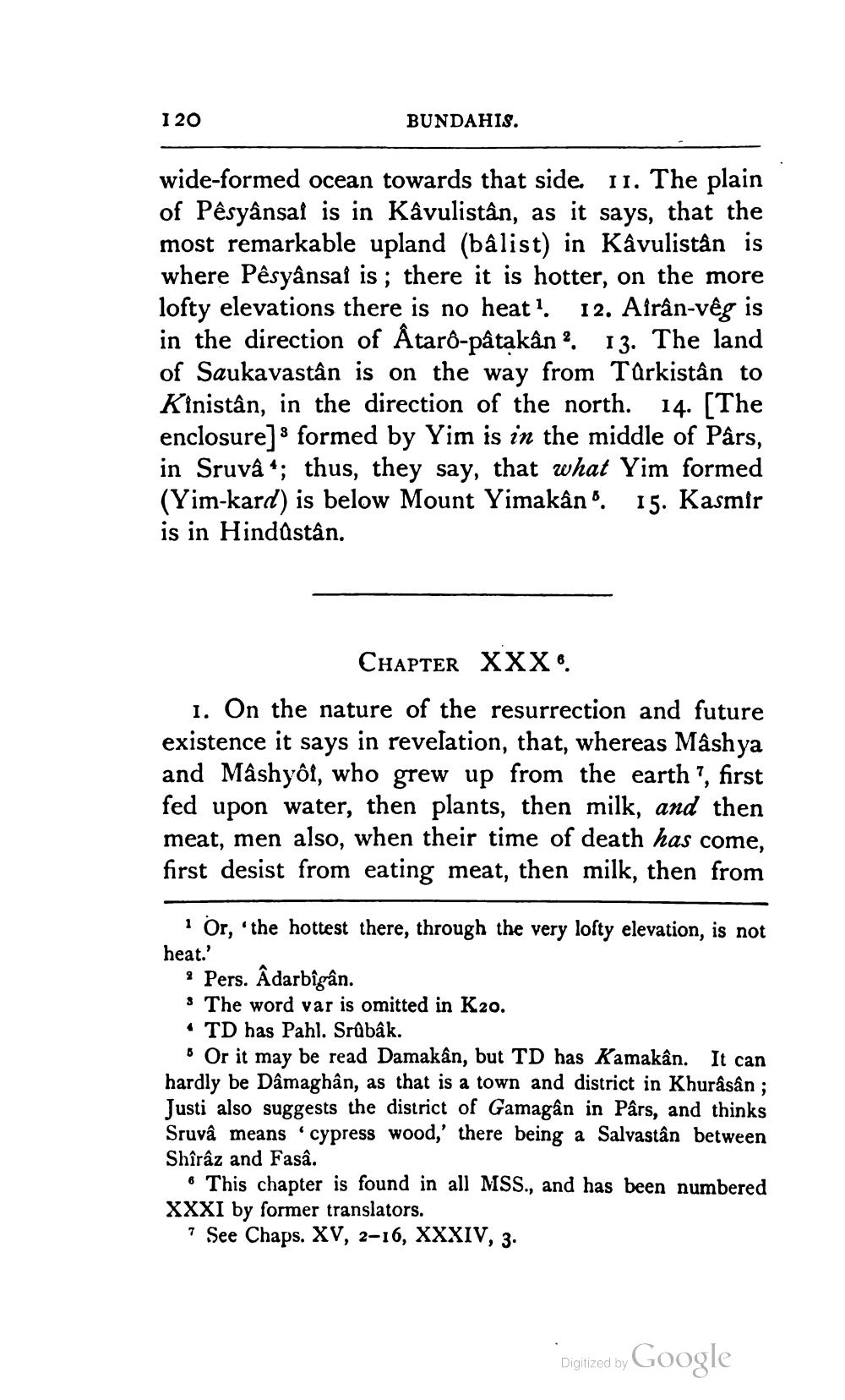________________
I 20
BUNDAHIS.
wide-formed ocean towards that side. 11. The plain of Pêsyânsat is in Kâvulistân, as it says, that the most remarkable upland (bâlist) in Kâvulistân is where Pêsyânsaf is; there it is hotter, on the more lofty elevations there is no heat 1. I2. Airân-vêg is in the direction of Âtarô-pâtakân2. 13. The land of Saukavastân is on the way from Türkistan to Kinistân, in the direction of the north. 14. [The enclosure] formed by Yim is in the middle of Pârs, in Sruvâ; thus, they say, that what Yim formed (Yim-kard) is below Mount Yimakân". 15. Kasmir
is in Hindustân.
CHAPTER XXX®.
1. On the nature of the resurrection and future existence it says in revelation, that, whereas Mâshya and Mâshyôi, who grew up from the earth, first fed upon water, then plants, then milk, and then meat, men also, when their time of death has come, first desist from eating meat, then milk, then from
1 Or, 'the hottest there, through the very lofty elevation, is not
heat.'
2 Pers. Âdarbîgân.
3 The word var is omitted in K20.
TD has Pahl. Srûbâk.
"Or it may be read Damakân, but TD has Kamakân. It can hardly be Dâmaghân, as that is a town and district in Khurâsân; Justi also suggests the district of Gamagân in Pârs, and thinks Sruvâ means cypress wood,' there being a Salvastân between Shîrâz and Fasâ.
This chapter is found in all MSS., and has been numbered XXXI by former translators.
7 See Chaps. XV, 2-16, XXXIV, 3.
Digitized by Google




